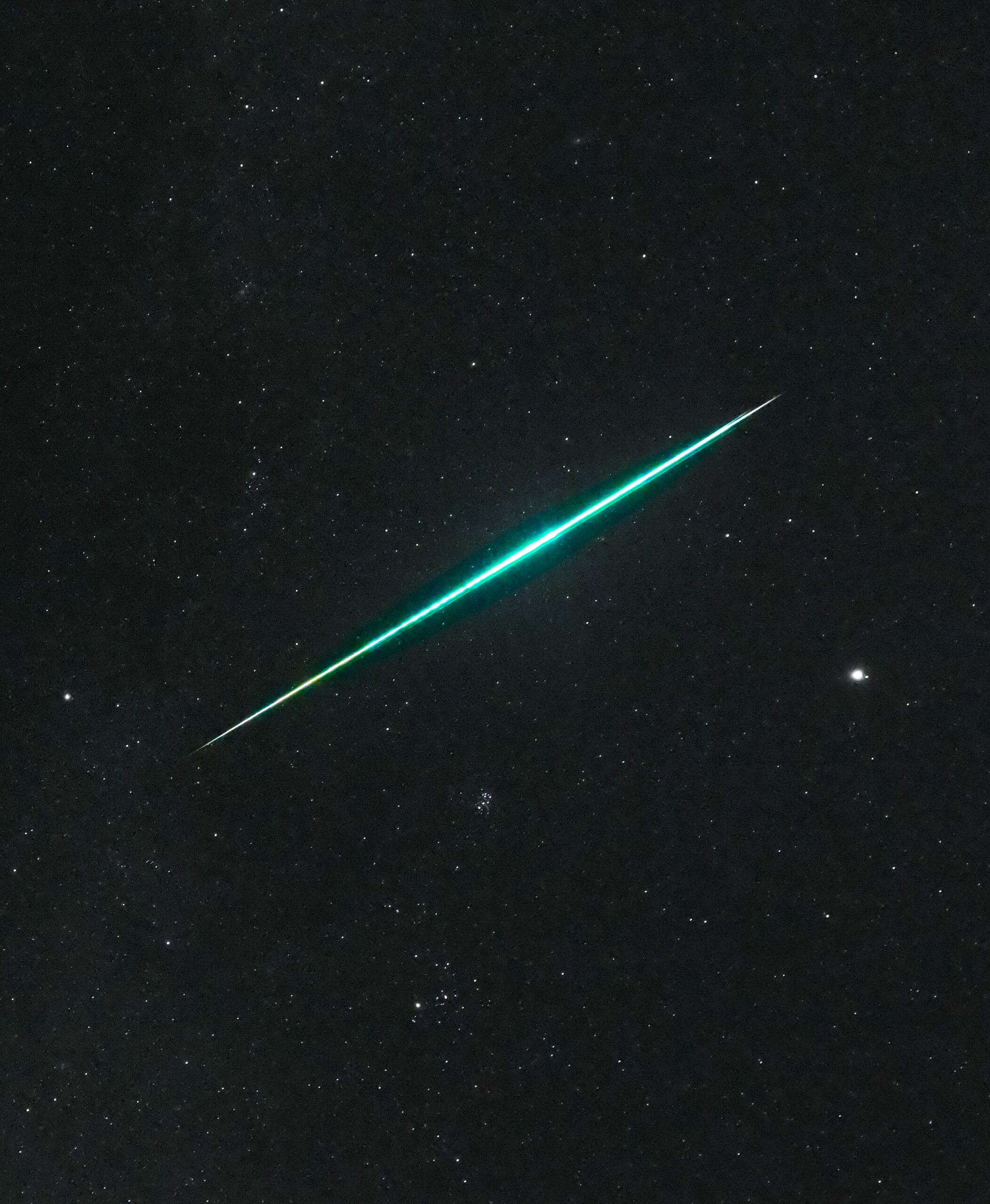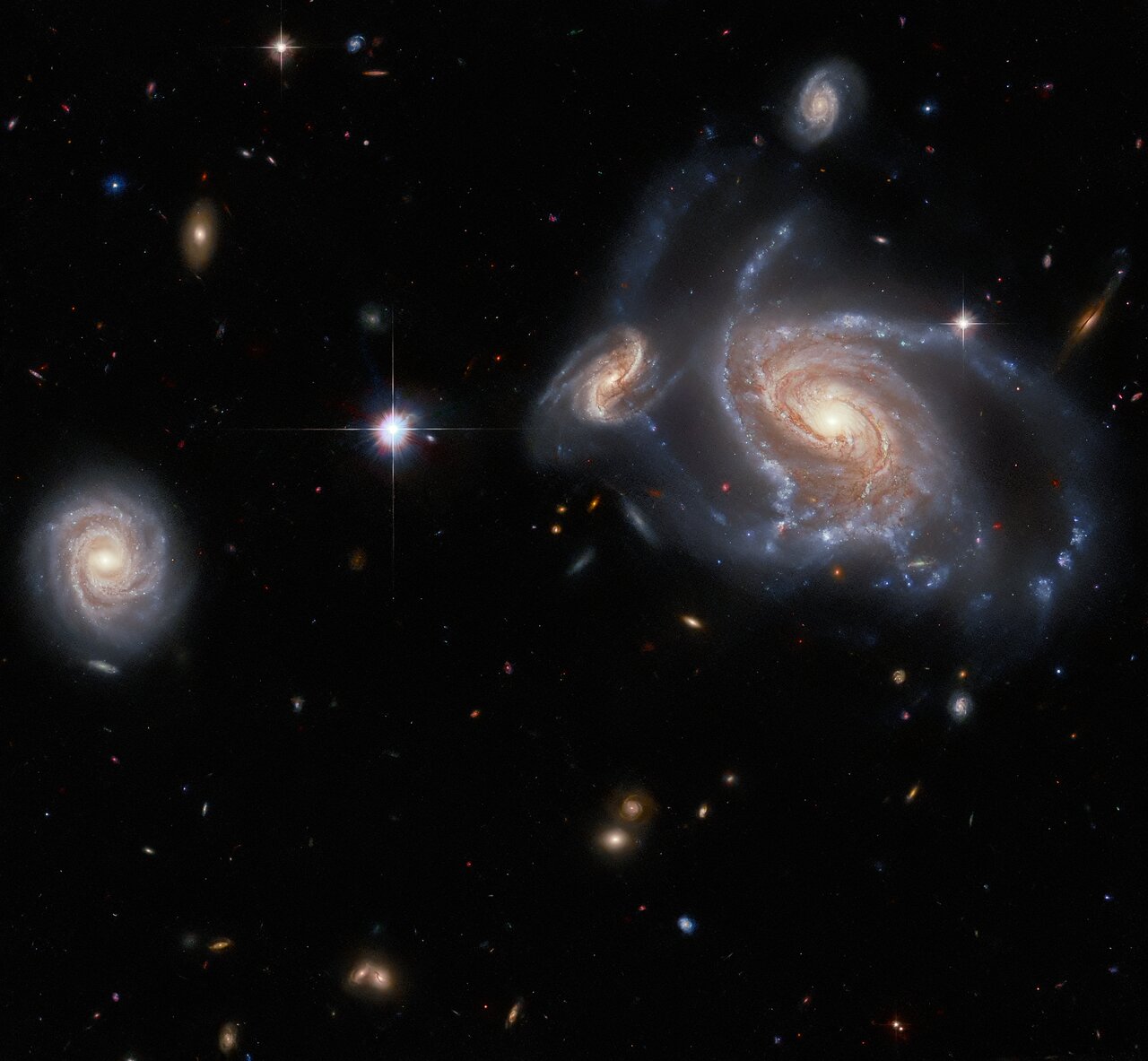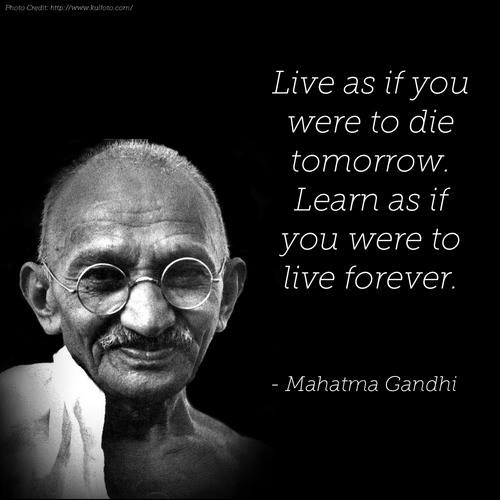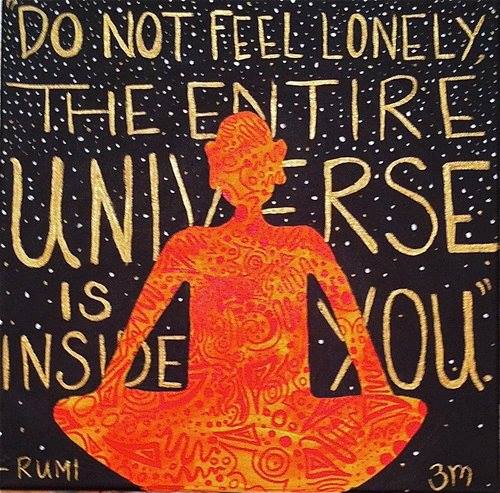Blog
For a brief moment, this brilliant fireball meteor outshone Jupiter in planet Earth’s night. The serendipitous image was captured while hunting meteors under cold Canadian skies with a camera in timelapse mode on December 14, near the peak of the Geminid meteor shower. The Geminid meteor shower, asteroid 3200 Phaethon’s annual gift, always arrives in December. Dust shed along the orbit of the mysterious asteroid causes the meteor streaks, as the vaporizing grains plow through our fair planet’s upper atmosphere at 22 kilometers per second. Of course Geminid shower meteors appear to radiate from a point in the constellation of the Twins. That’s below and left of this frame. With bright Jupiter on the right, also in the December night skyview are the Pleiades and Hyades star clusters.

DCIM100GOPROG0030446.JPG
more...
Charles Neville (December 28, 1938 – April 26, 2018) was an American R&B and jazz musician best known as part of The Neville Brothers. Known onstage as “Charlie the horn man”, his saxophone playing helped earn the group a Grammy Award for best pop instrumental performance.
The second oldest of the four Neville brothers, Charles Neville was born in New Orleans on December 28, 1938, to Arthur Lanon Neville Sr. and Amelia (Landry) Neville and was raised in the Calliope housing project with his musical brothers, Art, Aaron, and Cyril. Their uncle, George “Big Chief Jolly” Landry, was lead singer of the Mardi Gras Indian group The Wild Tchoupitoulas. Charles left home when he was 15 to play saxophone with the Rabbit’s Foot Minstrel Show. When back in New Orleans, he played in the house band at the Dew Drop Inn.
He served in the Navy from 1956 to 1958 and discovered the music scene on Beale Street while stationed in Memphis, Tennessee, later touring with B.B. King and Bobby (Blue) Bland.
more...Michel Petrucciani 28 December 1962 – 6 January 1999) was a French jazz pianist. From birth he had osteogenesis imperfecta, a genetic disease that causes brittle bones and, in his case, short stature. He became one of the most accomplished jazz pianists of his generation despite his health condition and relatively short life.
Michel Petrucciani came from an Italo-French family (his grandfather was from Naples) with a musical background. His father Tony played guitar, his brother Louis played bass, and his brother Philippe also plays the guitar. Michel was born with osteogenesis imperfecta, which is a genetic disease that causes brittle bones and, in his case, short stature. It is also often linked to pulmonary ailments. The disease caused his bones to fracture over 100 times before he reached adolescence and kept him in pain throughout his entire life. “I have pain all the time. I’m used to having hurt arms,” he said. In Michel’s early career, his father and brother occasionally carried him because he could not walk far on his own unaided. In certain respects he considered his disability an advantage, as he got rid of distractions like sports that other boys tended to become involved in. And he hints that his disability was helpful in other parts of his life. He said: “Sometimes I think someone upstairs saved me from being ordinary.” In 1999 Petrucciani died from a pulmonary infection a week after his 36th birthday. He was interred in Le Père Lachaise Cemetery in Paris, one tomb away from Frédéric Chopin.
more...Lonnie Liston Smith Jr. (born December 28, 1940) is an American jazz, soul, and funk musician who played with such jazz artists as Pharoah Sanders and Miles Davis before forming Lonnie Liston Smith and the Cosmic Echoes, recording a number of albums widely regarded as classics in the fusion, smooth jazzand acid jazz genres.
Smith was born and raised in Richmond, Virginia, United States to a musical family; his father was a member of Richmond Gospel music group The Harmonizing Four, and he remembered groups such as the Swan Silvertones and the Soul Stirrers (featuring a young Sam Cooke) as regular visitors to the house when he was a child. He studied piano, tuba and trumpet in high school and college before receiving a B.S.in music education from Morgan State University in Baltimore in 1961.
more...Edmund Leonard Thigpen (December 28, 1930 – January 13, 2010) was an American jazz drummer, best known for his work with the Oscar Peterson trio from 1959 to 1965. Thigpen also performed with the Billy Taylor trio from 1956 to 1959.
Born in Chicago, Illinois, United States, Thigpen was raised in Los Angeles, California, and attended Thomas Jefferson High School, where Art Farmer, Dexter Gordon and Chico Hamilton also attended. After majoring in sociology at Los Angeles City College, Thigpen returned to East St. Louis for one year to pursue music while living with his father who had been playing with Andy Kirk‘s Clouds of Joy. His father, Ben Thigpen, was a drummer who played with Andy Kirk for sixteen years during the 1930s and 1940s.
Thigpen first worked professionally in New York City with the Cootie Williams orchestra from 1951 to 1952 at the Savoy Ballroom. During this time he played with musicians such as Dinah Washington, Gil Mellé, Oscar Pettiford, Eddie Vinson, Paul Quinichette, Ernie Wilkins, Charlie Rouse, Lennie Tristano, Jutta Hipp, Johnny Hodges, Dorothy Ashby, Bud Powell, and Billy Taylor.
more...Earl Kenneth Hines, also known as Earl “Fatha“ Hines (December 28, 1903 – April 22, 1983), was an American jazz pianist and bandleader. He was one of the most influential figures in the development of jazz piano and, according to one source, “one of a small number of pianists whose playing shaped the history of jazz”.
The trumpeter Dizzy Gillespie (a member of Hines’s big band, along with Charlie Parker) wrote,
The piano is the basis of modern harmony. This little guy came out of Chicago, Earl Hines. He changed the style of the piano. You can find the roots of Bud Powell, Herbie Hancock, all the guys who came after that. If it hadn’t been for Earl Hines blazing the path for the next generation to come, it’s no telling where or how they would be playing now. There were individual variations but the style of … the modern piano came from Earl Hines.
The pianist Lennie Tristano said, “Earl Hines is the only one of us capable of creating real jazz and real swing when playing all alone.” Horace Silver said, “He has a completely unique style. No one can get that sound, no other pianist”. Erroll Garner said, “When you talk about greatness, you talk about Art Tatumand Earl Hines”.
Count Basie said that Hines was “the greatest piano player in the world”. Earl Hines was born in Duquesne, Pennsylvania, 12 miles from the center of Pittsburgh, in 1903. His father, Joseph Hines, played cornet and was the leader of the Eureka Brass Band in Pittsburgh,[6] and his stepmother was a church organist.
more...Drifting near bright star Eta Geminorum, seen at the right, the Jellyfish Nebula extends its tentacles from the bright arcing ridge of emission left of center. In fact, the cosmic jellyfish is part of bubble-shaped supernova remnant IC 443, the expanding debris cloud from a massive star that exploded. Light from the explosion first reached planet Earth over 30,000 years ago. Like its cousin in astronomical waters, the Crab Nebula supernova remnant IC 443 is known to harbor a neutron star — the remnant of the collapsed stellar core. The Jellyfish Nebula is about 5,000 light-years away. At that distance, the featured image would span about 140 light-years across.

Terry John Bozzio (born December 27, 1950) is an American drummer best known for his work with Missing Persons and Frank Zappa. He has been featured on nine solo or collaborative albums, 26 albums with Zappa and seven albums with Missing Persons. Bozzio has been a prolific sideman, playing on numerous releases by other artists since the mid-1970s. He was inducted into the Modern DrummerHall of Fame in 1997.Terry Bozzio was born on December 27, 1950, in San Francisco, California. He started at age 6 playing makeshift drum sets. At the age of 13 he saw the Beatles‘ premiere performance on The Ed Sullivan Show and begged his father for drum lessons.
In 1968, Bozzio graduated from Sir Francis Drake High School in San Anselmo, California, where he received a music scholarship award, and later went on to the College of Marin. During this time he studied concurrently with Chuck Brown on the drum set and Lloyd Davis and Roland Kohloff on a percussion and timpani scholarship. He also played Bartok-Dahl-Cowell & Baroque chamber ensembles with the Marin and Napa County Symphonies.
more...Tracy Nelson (born December 27, 1944) is an American country and blues singer. She has been involved in the recording of over 20 albums in her recording career, which started in 1965.
Nelson was born and grew up in Madison, Wisconsin, United States. There, she first learned about R&B music from nighttime listening to WLAC radio from Nashville, Tennessee. In her teens, Nelson sang folk music in coffeehouses and with The Fuller-Wood Singers group, and was lead singer in The Fabulous Imitations band. She attended the University of Wisconsin as a social science major.
In 1965, Nelson recorded an acoustic blues album released on Prestige Records, Deep Are the Roots. It featured blues harmonica player Charlie Musselwhite as a member of her backup band. In Chicago, where the album was recorded, Nelson met and learned from artists including Muddy Waters, Howlin’ Wolf, and Otis Spann.
more...Thelonious Sphere Monk III (born December 27, 1949) is an American jazz drummer, composer and bandleader. He is the son of jazz pianist Thelonious Monk.
Born in New York City, Monk began his music career early in his life, honing his skills throughout the 1970s. Monk’s destiny was sealed when Art Blakey gave him his first drum set at the age of 15, and began lessons with Max Roach. After earning a reputation in school as a rabble-rouser (and graduating), the young Monk joined his father’s trio and toured with his dad until the elder Monk’s retirement in 1975.Monk then launched into the music that had captivated him and his generation, R&B. He first toured with a group called Natural Essence and afterward, along with his sister Barbara, formed his own band.
By the dawning of the 1980s, he had formed his eponymous band, which featured him on drums and occasional lead vocals. The group’s début album, 1980’s House of Music, featured several hits that placed on the Billboard R&B chart, including “Bon Bon Vie (Gimme the Good Life)“, which featured Monk on lead vocals, and “Candidate for Love”. The tracks peaked at No. 63 and No. 58 respectively, in the UK Singles Chart. The band went on to release two more albums throughout the early 1980s, though singlesreleased from these albums did not fare as well as those on the début.
more...This Hubble Picture of the Week features a richness of spiral galaxies: the large, prominent spiral galaxy on the right side of the image is NGC 1356; the two apparently smaller spiral galaxies flanking it are LEDA 467699 (above it) and LEDA 95415 (very close at its left) respectively; and finally, IC 1947 sits along the left side of the image.
ThIs image is a really interesting example of how challenging it can be to tell whether two galaxies are actually close together, or just seem to be from our perspective here on Earth. A quick glance at this image would likely lead you to think that NGC 1356, LEDA 467699 and LEDA 95415 were all close companions, whilst IC 1947 was more remote. However, we have to remember that two-dimensional images such as this one only give an indication of angular separation: that is, how objects are spread across the sphere of the night sky. What they cannot represent is the distance objects are from Earth.
For instance, whilst NGC 1356 and LEDA 95415 appear to be so close that they must surely be interacting, the former is about 550 million light-years from Earth and the latter is roughly 840 million light-years away, so there is nearly a whopping 300 million light-year separation between them. That also means that LEDA 95415 is likely nowhere near as much smaller than NGC 1356 as it appears to be.
On the other hand, whilst NGC 1356 and IC 1947 seem to be separated by a relative gulf in this image, IC 1947 is only about 500 million light-years from Earth. The angular distance apparent between them in this image only works out to less than four hundred thousand light-years, so they are actually much much closer neighbours in three-dimensional space than NGC 1356 and LEDA 95415!

Doug Hammond (born December 26, 1942) is an American free funk/avant-garde jazz drummer, composer, poet, producer, and professor. His first major release was Reflections in the Sea of Nurnen on Tribe Records in 1975.
He has worked with musicians including Earl Hooker, Sonny Rollins, Charles Mingus, Sammy Price, Donald Byrd, Wolfgang Dauner, Ornette Coleman, Steve Coleman, Nina Simone, Betty Carter, Marion Williams, Paquito D’Rivera, Arnett Cobb, James Blood Ulmer and Arthur Blythe.
more...John Scofield (born December 26, 1951) is an American guitarist and composer whose music over a long career has blended jazz, jazz fusion, funk, blues, soul and rock. He first came to mainstream attention in the band of Miles Davis, and has toured and recorded with many prominent jazz artists, including saxophonists Eddie Harris, Dave Liebman, Joe Henderson and Joe Lovano; keyboardists George Duke, Joey DeFrancesco, Herbie Hancock, Larry Goldings and Robert Glasper; fellow guitarists Pat Metheny, John Abercrombie, Pat Martino and Bill Frisell; bassists Marc Johnson and Jaco Pastorius; and drummers Billy Cobham and Dennis Chambers. Outside the world of jazz, he has collaborated with Phil Lesh, Mavis Staples, John Mayer, Medeski Martin & Wood, and Gov’t Mule.
Although he was born in Ohio, his family moved to Wilton, Connecticut, where he discovered his interest in music. Educated at the Berklee College of Music, Scofield left school to record with Chet Baker and Gerry Mulligan. He joined the Billy Cobham/George Duke Band soon after and spent two years playing, recording, and touring with them. He recorded with Charles Mingus in 1976 and replaced Pat Metheny in Gary Burton‘s quartet.
more...More Posts
- World Music with Enya
- Daily Roots with Carl Dawkins
- The Cosmos with Belt of Orion
- Antonio Hart Day
- Oscar Pettiford Day
- Buddy Rich Day
- World Music with Braima Galissá
- Daily Roots with the Techniques
- Pippin Final Performance
- The Cosmos with MyCn 18
- Roy Campbell Jr Day
- Jean-Luc Ponty Day
- World Music with Charumathi Raghuraman
- Daily Roots with Chuck and Dobby
- Pippin
- The Cosmos with NGC 2442
- Kenny Kirkland Day
- Victor Jara Day
- John Gilmore Day
- Koko Taylor Day


